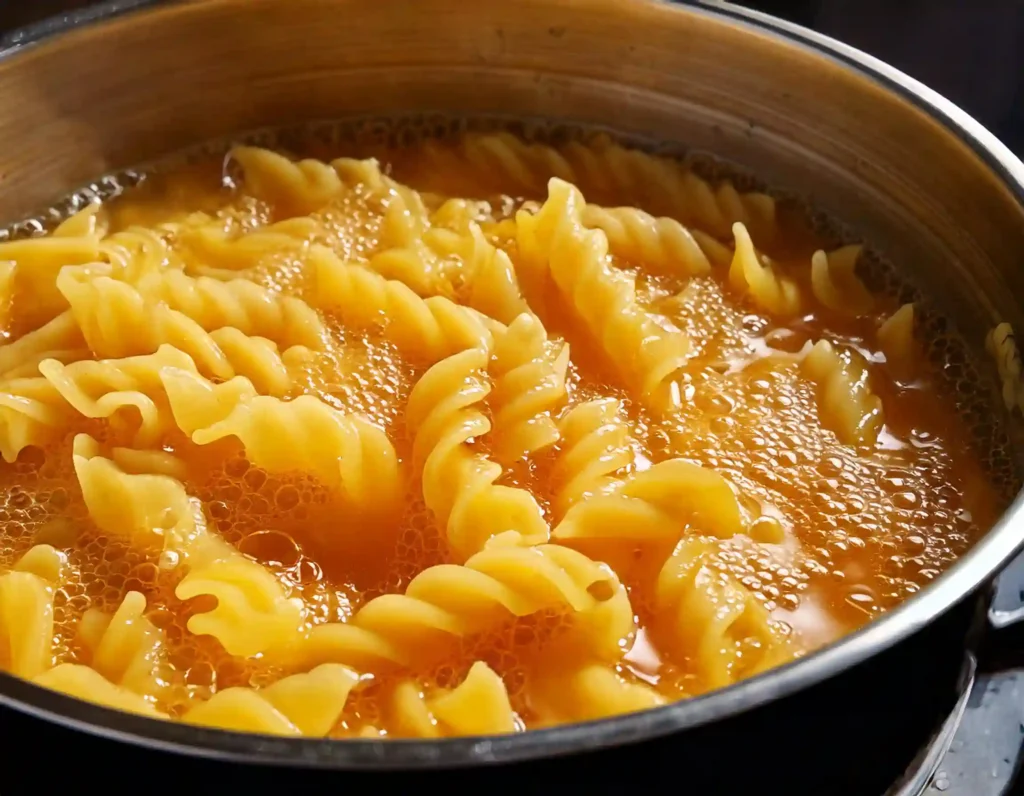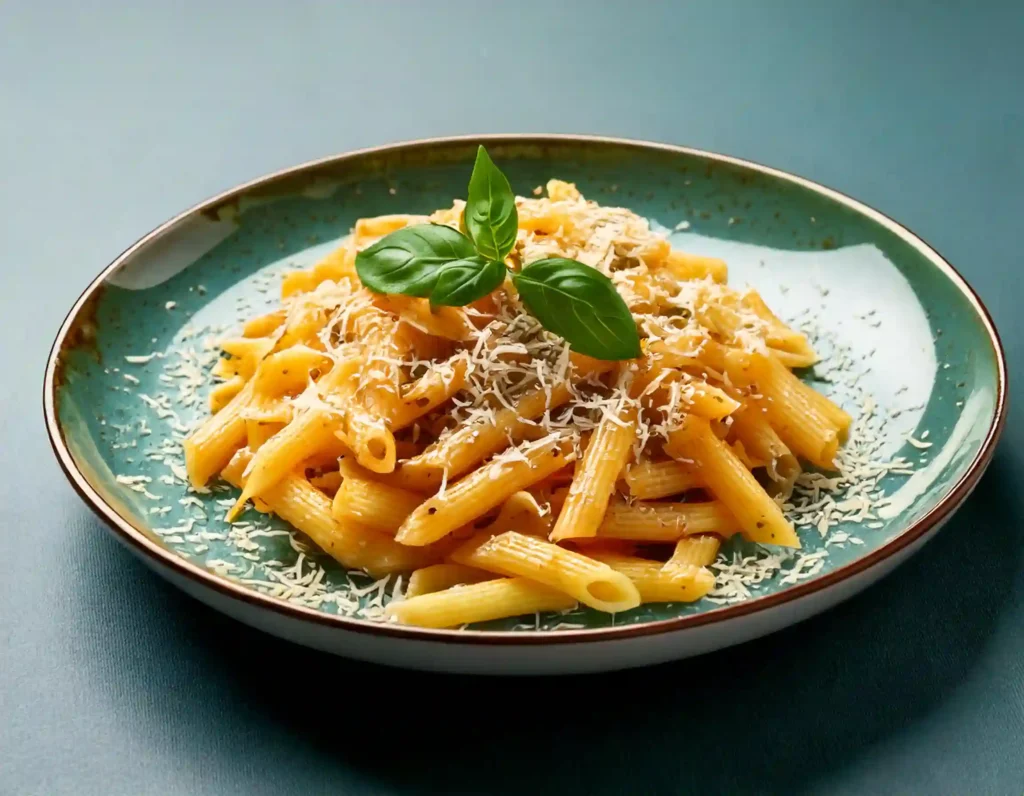Sometimes we crave something simple and soothing. Pastina, that tiny star-shaped pasta, often pops up when we’re under the weather or feeling a bit sentimental. This article touches on Why Does Pastina Make Me Feel Better? while looking at easy ways to bring warmth, comfort, and a sense of well-being into our meals.
Exploring the Comfort of Pastina
The Historical Context of Pastina
Many families have their own stories about how pastina was introduced to them. Grandparents in Italian households, for instance, often made this petite pasta for grandkids who were feeling drained. Although specific historical records might vary, most sources point to Italian cuisine as the place where pastina first gained popularity. Over time, it spread across different cultures, popping up as a staple for quick meals or soothing bowls of comfort. Even so, it remains beloved for its emotional eating appeal and gentle taste.
Personal Anecdotes and Cultural Stories
In some communities, pastina isn’t just another type of pasta. Instead, it symbolizes care and warmth. Some folks cherish the memory of a distant relative handing them a steaming bowl of pastina when they had a sore throat. Others remember special get-togethers where someone always whipped up a pot of pastina in broth. Time and again, people say, “Why Does Pastina Make Me Feel Better?” because it reminds them of simpler, happier moments.
Nutritional Benefits of Pastina
Macronutrients and Their Role in Recovery
While pastina won’t pack the same punch as, say, a leafy green salad, it still offers a light dose of macronutrients. A typical serving contains carbohydrates for energy, along with some protein to keep us going. This balance might help people regain a bit of strength when their appetite is delicate. Carbs can assist the body in replenishing energy reserves, especially if you’ve been sick or feeling overly fatigued.
Vitamins and Minerals Found in Pastina
Many brands of pasta are enriched with iron and B vitamins. These nutrients can support basic bodily functions, including healthy red blood cell production and steady metabolism. While pastina’s nutritional value isn’t as broad as fresh produce or beans, it still contributes to an overall balanced meal. Mixing it with veggies, chicken, or fish may help improve both taste and overall nutrient intake.
Pastina and Feeling Sick

The Role of Comfort Foods in Illness Recovery
It’s common to reach for something mild when you’re battling nausea or a cold. Italian comfort food often pops up in those times, and pastina fits the bill. Medical professionals sometimes mention that bland foods help avoid further upset to the stomach, which is why small pasta shapes in broth can feel more soothing than heavier dishes. Meanwhile, the warmth of the broth may ease a scratchy throat.
How Pastina Aids in Hydration and Digestion
Feeling sick can reduce a person’s ability to stay hydrated. Broth-based meals and tiny pasta shapes often encourage fluid intake. In addition, softer foods like pastina are easier on sensitive digestive systems. Because it’s gentle on the stomach, it might help individuals keep food down while still getting some energy.
Psychological Comfort of Pastina
The Connection Between Food and Emotions
Food plays a big role in how we feel, both physically and mentally. Our brains often connect the flavors and aromas from childhood with positive experiences. Because pastina is tied to home-style cooking and soothing mealtime memories, it can spark happiness and reduce stress. Researchers have noted that certain comfort foods can calm the nervous system, if only for a brief respite.
Pastina as a Symbol of Care and Nurturing
When family members offer a bowl of healing foods during tough times, that simple act can go a long way. Even the smallest gestures might brighten our mood. Pastina has come to mean more than just a pasta dish: it often signifies gentleness, love, and maternal care. Because of this, many people find themselves saying, “Why Does Pastina Make Me Feel Better?” whenever they need a comforting touch.
Pastina Beyond Simple Broth
Creative Ways to Incorporate Pastina into Meals
Folks sometimes stick with plain pastina in broth, especially when they’re unwell. Yet pastina can be spruced up in many other ways too. Some add vegetables and fresh herbs, turning it into a more substantial dish bursting with variety. Others add cheese, such as grated parmesan or mozzarella, for a creamier take on pasta and health—though moderation is wise. Transitioning from a simple soup to a heartier bowl might let you shift gently between light eating and regular meals.
Pastina in Different Culinary Traditions
Although pastina is mostly connected to its Italian roots, similar small pasta grains appear in other cuisines. Variations of small noodles or grains show up in soups from Greece, Israel, and some Middle Eastern countries too. Each version reflects local tastes but shares that same comfort factor. Because of this versatility, many cultures have embraced mini-sized pasta as a quick way to stretch a meal or add a belly-warming snack.
Balancing Pastina with Other Foods
Pairing Pastina with Nutrient-Dense Ingredients
While pastina is gentle on the stomach, pairing it with foods like lean meats, fish, legumes, or colorful vegetables might boost its nutrient levels. Adding carrots, celery, and onions to a chicken pastina soup brings more vitamins to the table. Some like to top it off with chopped parsley or basil for extra flavor. Working in healthy fats, such as olive oil, can also add a smoother texture without overwhelming the dish.
Portion Control and Moderation
Emotional well-being and food often go hand in hand, but keeping an eye on portion sizes matters when you’re incorporating carbs. If you’re eating pastina every day, try balancing it with protein or fibrous vegetables. That way, you’ll avoid a crash in energy later on. Small bowls can still satisfy cravings for comfort and remind us that moderation is one reason pastina and health can coexist well.
Different Pastina Recipes, Statistics, and Variations

Recipe: Classic Pastina with Twist
Below is a comforting recipe that blends pastina with nutritious ingredients. Some folks add an egg or two to make it heartier, but this version sticks to easy additions.
Ingredients:
- 1 cup of pastina (dry)
- 4 cups of low-sodium chicken or vegetable broth
- 1 small onion, finely chopped
- 1 medium carrot, diced
- 1 stalk of celery, diced
- 1 tablespoon olive oil
- Salt and pepper to taste
- Optional: a small handful of fresh spinach or kale
Cooking Instructions:
- Warm a medium pot over moderate heat, then drizzle in the olive oil. Stir the chopped onion, carrot, and celery until they soften and release their aroma. Watch that they don’t brown too much.
- Pour the broth into the pot and bring it to a gentle boil. Add a pinch of salt and pepper, adjusting to your taste later.
- Stir in the dry pastina. Let it cook until the pasta is tender, usually around 5 to 7 minutes. Because pastina is quite small, keep an eye on the pot so it doesn’t stick.
- For an extra kick of color and vitamins, toss in fresh spinach or kale during the final minute of cooking.
- Once the pasta is done, taste the soup and adjust seasonings. If the broth has reduced too much, add a bit more water or stock. Turn off the heat and let the soup rest for a minute.
- Ladle into bowls and serve right away. This dish is best enjoyed hot, with a side of crusty bread if you like.
Global Data & Statistics on Comfort Food
- A 2023 survey indicated that 60% of respondents worldwide turn to comfort foods like pasta when stressed.
- According to some market research, small pasta shapes rank among the top five choices for soup-based dishes in many Western countries.
- In the United States, industry data highlighted that pasta sales rose by around 10% during peak cold and flu months, with pastina among the faster-growing types.
Final Thoughts and FAQs
Why Does Pastina Really Make Us Feel Better?
Experts often note that easy-to-digest carbs might calm our tummies while the warm broth helps us stay hydrated. Meanwhile, the psychological benefit is real: thinking of homemade meals and caring memories can brighten any gloomy day. This is why so many people continue asking, “Why Does Pastina Make Me Feel Better?” again and again. The answer often lies in both its gentle nutrition and the comforting nostalgia it brings.
People Also Ask
1. What are the benefits of pastina?
Pastina is easy to prepare, light on the stomach, and a source of carbohydrates. It can fill you up without causing major digestive issues, particularly when paired with broth and veggies.
2. Why does pasta make me feel better?
Carbs can raise serotonin levels in the brain, which sometimes lifts your mood. Pasta also carries a bit of nostalgic warmth, so it might remind you of cozy dinners or family gatherings.
3. Is pastina good when you’re sick?
Yes, many people choose it when they’re under the weather because it’s simple, quick to cook, and easier on sensitive stomachs. The mild flavor and soft texture help keep you nourished while you recover.
4. Are you supposed to drain pastina?
That depends on your recipe. Some prefer cooking it in broth without draining, creating a soupier dish. Others boil it in water, then drain and add sauce. Either way works fine—just do what suits your taste.
Nutritional Information (Per 100g)
| Component | Amount |
|---|---|
| Calories | ~130 kcal |
| Carbohydrates | ~25 g |
| Protein | ~4.5 g |
| Fat | ~1 g |
| Fiber | ~1 g |
| Sodium | Varies by broth |
| Iron | ~5% of Daily Value |
| B Vitamins | ~3–5% of Daily Value |
Such data can differ based on the specific brand of pastina and the type of broth or additional ingredients you use. Nonetheless, Why Does Pastina Make Me Feel Better? remains a popular question because this tiny pasta so often delivers comfort and relief whenever we crave something warm and soothing.

